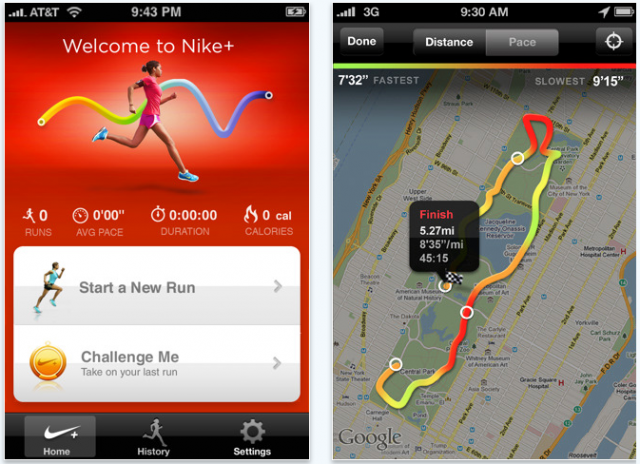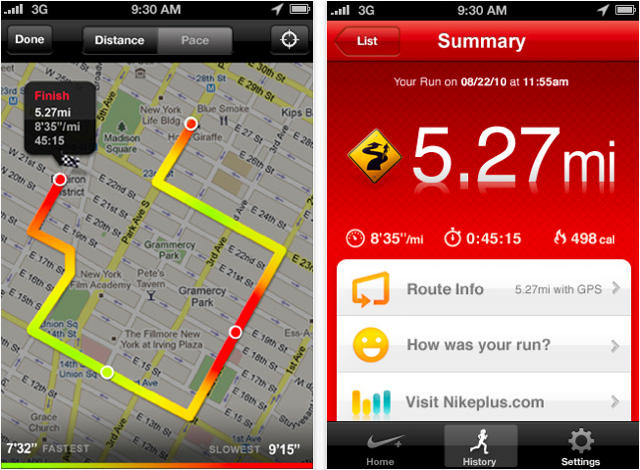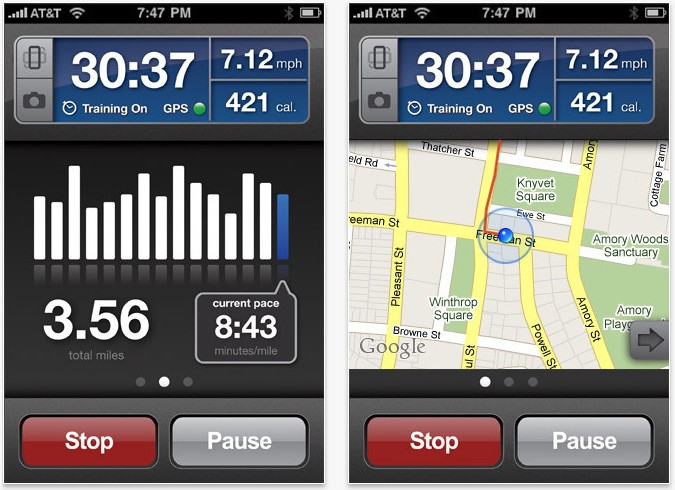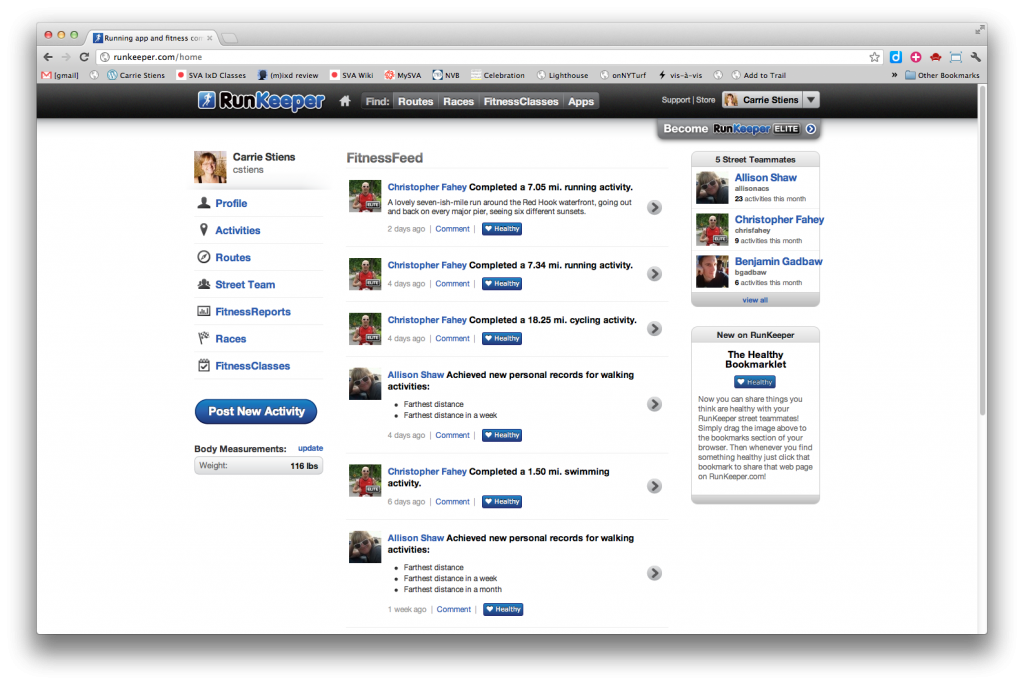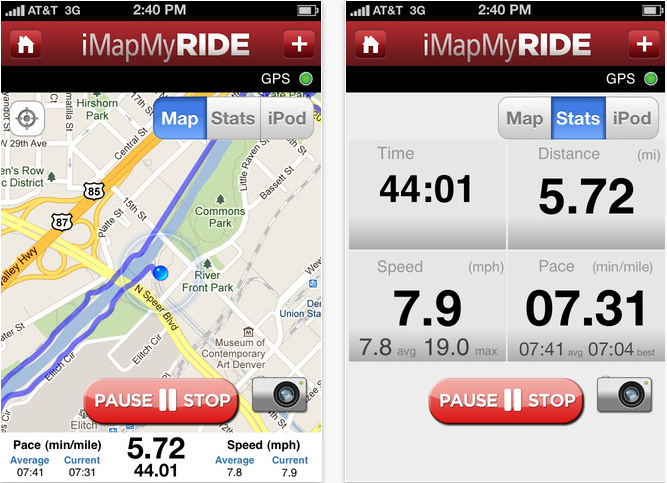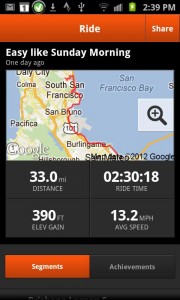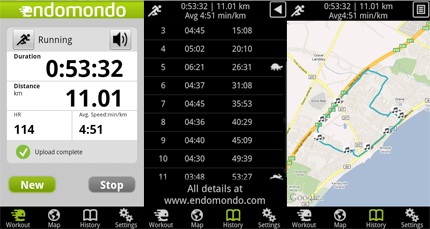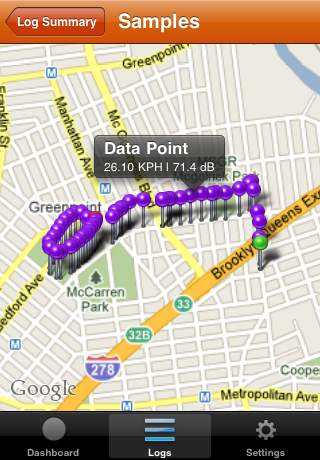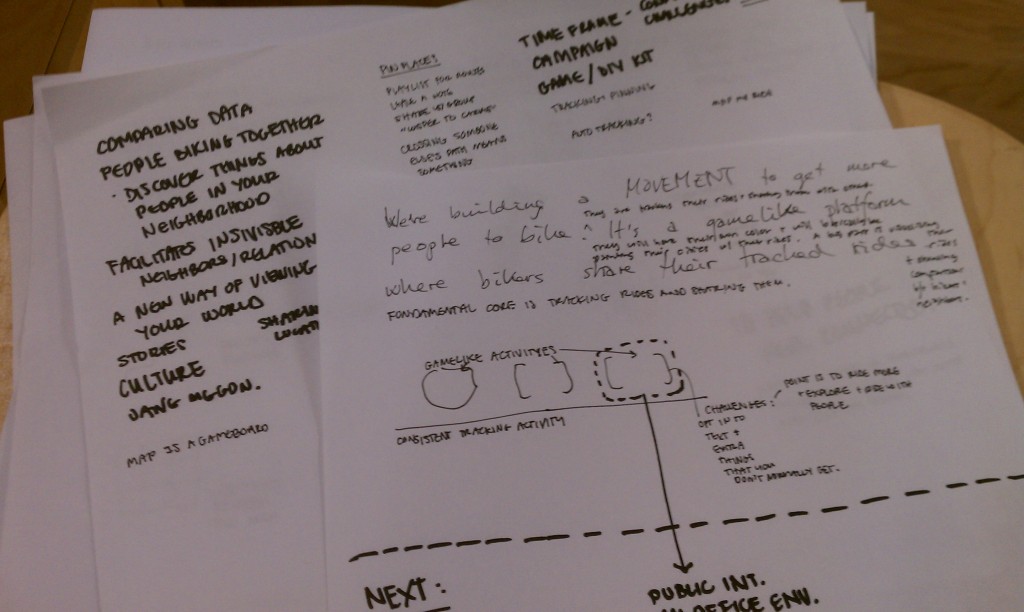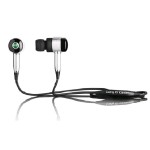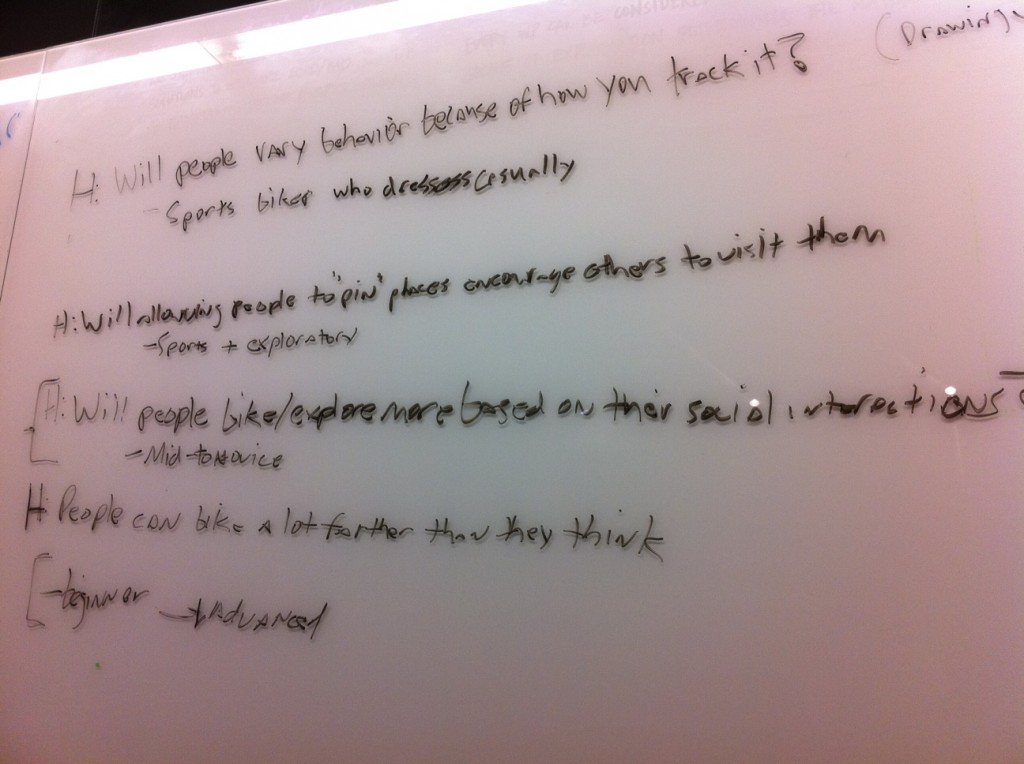We are designing an Office Bike Challenge. Above is an initial idea about how the scoring could be structured. The four different activity types allow for various levels of engagement for bikers and non-bikers alike.
Monthly Archives: November 2011
Paint Your City
ELEVATOR PITCH
Paint Your City is a social tracking platform with game challenges that motivates people to ride their bikes. It’s for city dwellers with under-utilized bikes who have a need to maintain a busy and active lifestyle and get around their city.
Unlike tracking apps that are exercise-focused (Runkeeper and NikePlus), our service caters to the unique way that a biker experiences the city. In addition to tracking while riding, bikers can bookmark places and events, unlock secrets from fellow riders, be cheered on by friends, and get directions spoken to them. This narrative is visualized on a city map individually or as part of a bigger bike story.
GOAL AND RATIONALE
Our goal is to get people excited and curious about biking, and to provide a way for people to encourage each other to use their bike more for getting around the city.
We will achieve this by giving the user voluntary challenges (initiated by self, friends or their workplace) to push themselves to bike more as well as recruit others to get on their bikes. We are providing consistent feedback on their progress, and enhancing the in-ride experience.
A character study
We were asked to make up a character that could be in the target audience for our product. Meet Rijke De Vries Foreman:
-What is this person’s name:
Rijke De Vries Foreman – a 32 year old woman working in the Department of Finance in NYC as the Head of the Parking Violations Hearing Officers. She dealt with parking rules and violations herself before, but now she mostly deals with her employees. A passionate Amsterdam cyclist is suddenly trying to bring in cash for the city that never sleeps through adjudicating parking violations. Marrying the British diplomat, Eric Foreman, was what brought her to the city. But this particular job? Some coincidences led her into the field when she first moved to the city. Her work ethics, and her straightforward communication moved her some steps up the ladder. Her colleagues are nice, and her office is OK. She doesn’t love the job, but it allows her to jump on her bike and leave at a decent hour every day.-What is a secret about this person that everyone knows?
When there are meetings in the office with outside guests involved, the cookie box is on the table. Rijke doesn’t ever buy candy or cookies herself. She has a hard time controlling the intake if the goods are right there in front of her, though. When excited about a subject she might talk fast and high-pitched while the chocolate chip cookie crumbs jump out of her mouth. Though her employees might find it amusing, and cute even, visitors might not, so they deliberately try to keep the box of cookies at a safe distance from her chair in the conference room.Being cute is not a quality Rijke appreciates in herself or others. She wants to be respected by her employees and her boss because she knows how to practise law. And although she gets overly excited when the chocolate chip cookies are on the table, she is definitely respected.
-What color socks is she wearing?
Rijke has a drawer full of pantyhose, thin or thick, wool or nylon, and in various, neutral colors. No funky patterns as she feels those would give her legs a bit too much attention. Attention they don’t deserve. She’s certainly not overweight, but her thighs and calves are on the larger side. Her pantyhosed legs are typically placed in somewhat high-heeled black shoes that she keeps in her office. Comfortable shoes, though high enough so that she looks professional and gains some height. Those extra centimeters – she feels that it makes people respect her more. In reality it gives her that little confidence boost that makes her expect respect from her surroundings. Her expectations are met by most, although she’s not the kind of person that wins a room instantly. She’s grateful that her workplace appreciates hard workers. However, sometimes she wishes that there could be a little more excitement and fun in the office. She’s surrounded by serious people, and obviously, as she is most of these people’s boss, she might have something to do with that.-What is her most prized possession?
Rijke loves her bike. When her Mom for some reason wanted to upgrade to a newer and lighter bike, she left the wonderfully heavy, black beauty for Rijke. Rijke used it, rain or shine, for 5 years while studying in Amsterdam, and she simply could not leave it behind when she moved to America.-What’s her biggest regret?
Rijke always looks forward. She doesn’t regret her choices in life, but the hardest decision she ever had to make, was when she turned down the PhD position offered at the University of Amsterdam, to move to NYC with Eric instead. She would get to research rehabilitation and behavior change for tough criminals. There’s a big difference between that kind of behavior change, and the silly parking violations she deals with now. Most drivers get tickets because the rules are too confusing, or because there’s simply not enough parking spaces available for all those cars. But if all New Yorkers just sold their cars and started biking, the problem would be solved!
3-4 Hours Exercise Not Enough
I just read an interesting post from Copenhagenize, Can You Afford NOT to Use Your Bicycle for Commuting?. Lars Barfred argues that most of us are not even close to reaching the limit of what our body can handle when it comes to physical activity:
Even if you do the weekly 3-4 hours most governmental health organisations tend to advocate, you do not exceed 50% of what you were born to. [...] It is probable that the recommendation of 3-4 hours a week, is more based on what the health boards believe is realistic to encourage, and will not scare too many people away.
I believe that if you only try to bike for transportation, you’ll be surprised by how far you actually can bike. All of us can bike much further than we think, just like Barfred explains how comedian Eddie Izzard demonstrated that he could run much further than most people thought he could:
Izzard clocked up more than 27 miles – further than a marathon – every day, six days a week, since he set off on July 26. The man who trained for only five weeks before his Herculean effort found things became much easier once he hit the road. When he started, he was completing the daily distance in around ten hours. By the time he had finished he had halved his time to a little over five.
Barfred also explains why biking is a good form for base exercise:
The bicycle is gentle on joints and tendons, provided you do not stretch your knee fully during revolutions. Runners are often injured, which is why bicycling is the best base exercise you can find.
Tracking Apps Tested
Office Bike Challenge
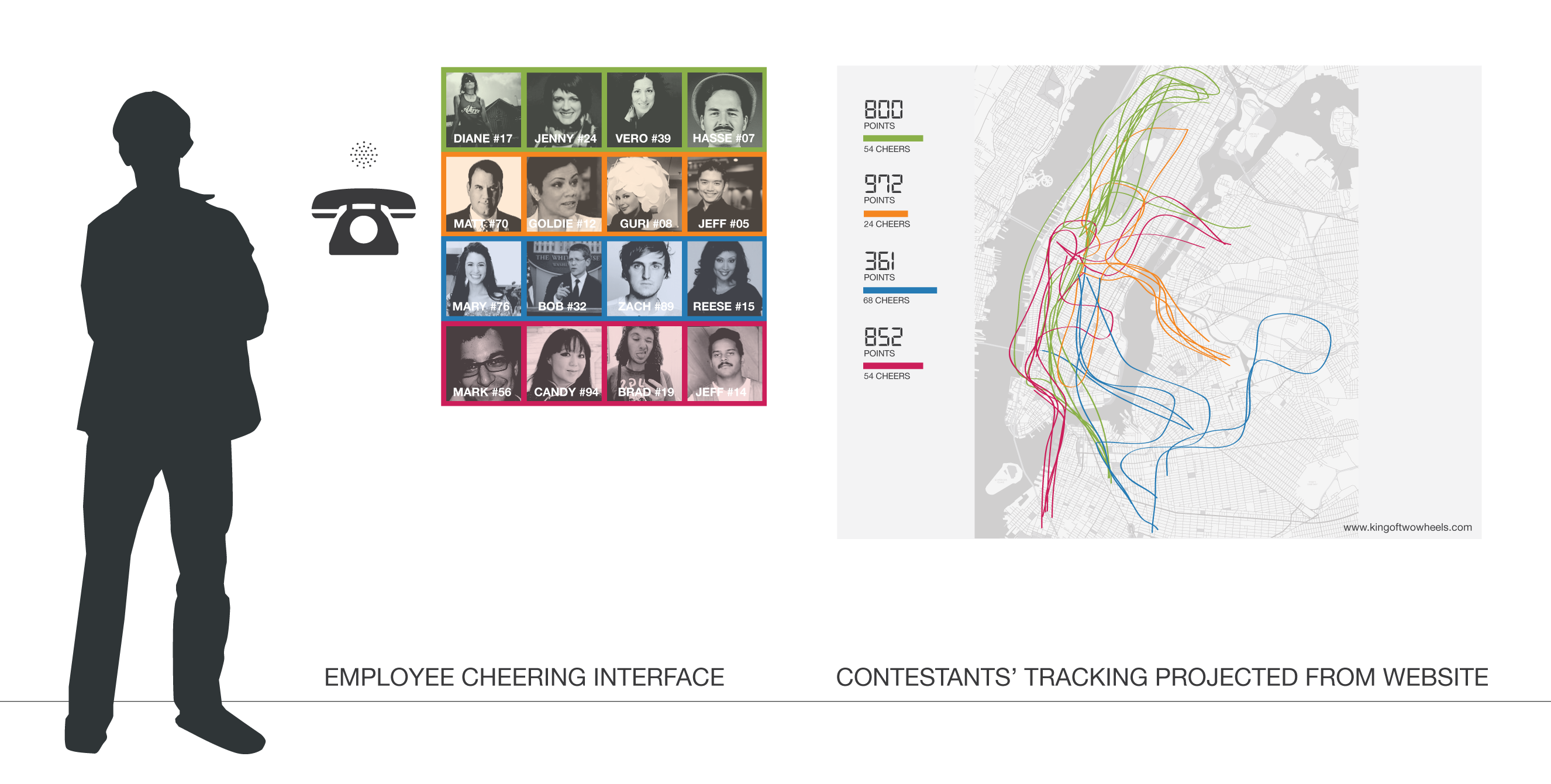 As we mentioned in A Shift to Motivation, our thesis project will involve an online platform for riders to track their rides along with game challenges that can be hosted between friends, co-workers and strangers. For our Public Interfaces class, we want to focus in on one type of challenge that can be hosted in an office where 4-person teams compete for riding the most miles.
As we mentioned in A Shift to Motivation, our thesis project will involve an online platform for riders to track their rides along with game challenges that can be hosted between friends, co-workers and strangers. For our Public Interfaces class, we want to focus in on one type of challenge that can be hosted in an office where 4-person teams compete for riding the most miles.
Having teams compete will hopefully create an interesting dynamic where contestants at different levels will cheer each other on, instead of mainly competing against each other like the setup in the previous King of Two Wheels challenge.
We’re also switching from tracking with yarn and pins to an online display based on tracking with an app. The tracked routes can be projected in the office as seen in the model above, or alternatively displayed on a monitor. Along with the projection, we are designing a physical installation for the office space to engage all office employees to cheer for the game contestants. They will participate by sending a cheer to contestants through an old-school dial phone. The cheer will either enter the contestants’ phone as a text message, or be read out loud to the contestant if s/he is currently biking with earbuds or is using our awesome thesis helmet with speakers.
The interface in the model requires that we send an installation package with the phone and photos of the contestants to participating offices. We believe this installation will create a larger buzz around biking in the office environment, and give the participants the attention they deserve. However, offices could also participate without the package—just by projecting the web interface, and using mobile phones to send cheers to contestants. The most important thing is obviously to get more people to get excited about riding their bikes!
A Shift to Motivation
We decided to shift our focus to motivation. While we want to have live voice directions as a feature, tracking is the key component. Rather than only a device, we are making a movement; A movement toward getting more people to discover their human superpowers through biking. What does this mean? Well, we feel alive and empowered by biking and want to spread the love. In other words, we want to build a movement to get more people to bike. It will be a game-like platform consisting of a website, mobile app, sensing and talking helmet, and game challenges in which the city is the game board.
PAINTING THE CITY
Our audience are those not yet convinced of biking as a primary mode of transportation as well as the casual and committed commuters. Through riding and tracking their rides, they can make a visual mark on the city map. They would simply be painting the city through the trips they take on their bike with their chosen game color. The website will be dominated by visualizations of rides. Riders’ tracking activity is displayed, and comparisons can be made between friends, neighbors and strangers.
GAME CAMPAIGNS
Bikers can simply share their own visual bike story through tracking. However, a biker can also make their everyday rides more interesting and motivating by initiating game challenges between their friends. Games at both small and large scales can be hosted. Games involving a group of people would be more like campaigns challenging individuals to team up, ride more and explore their cities. These campaigns can last for a short or long period of time, and can be hosted within social networks or physical workplaces.
TRACKING AND PINNING
Tracking should be a consistent activity where every ride is recorded by the app. To ensure consistency, the start and stop will be triggered automatically by a sensor in the helmet. Along with the tracking sensor, the talking helmet will facilitate digital marking and remembering places or moments on a ride with the ‘pin’ button. This button is also an open framework for other connections to be made between bikers. However, the helmet is not required for riders to participate. We hope to allow for people to use earbuds with a button to provide an experience somewhat similar to that provided by the helmet. We want the barrier to entry to be low, so the only piece required to participate is the app.
With this shift, we believe the magic lies in telling your bike story through data-tracking, comparing data, getting to know your neighbors and in building culture through a community of people riding their bikes.
Hardware Update
In the previous hardware post, I wrote about a few different directions we could go to integrate sensors with a mobile app. The simplest way, however, is to re-program a button on an existing bluetooth headset or wired earbuds. To start, we can write a basic mobile app that will do ‘what we say’ when the button is pressed. For example, with the ‘pin’ feature, when the button is pressed the app will record the longitude, latitude and/or time.
I found these wireless headphones the other day. While Apple’s wired earbuds will work just as well for initial experimenting, these could be a great wireless option. They both stream music and handle phone calls, as well as have the button input.
What if your city felt smaller and your experience of it felt bigger?
In my thesis workgroup, I’ve been exploring the who, what, when, where, who by and why of the idea. This question is a part of the why. There are so many intangible benefits to biking, which is why Kristin and I want to share these joys with other people. Our main initiative is not environmentally or health focused, even though these are also key benefits for biking. Our initiative is for better lifestyles.
Audience and other thoughts
On the wall there are some questions my teacher David Womack wrote down while I was talking through our thesis concept. The thesis group session and all the conversations Carrie and I have had lately about concept and focus has led to lots of thoughts floating around in my head. I’ve tried to write down all of them here. It’s unfortunately very close to a brain dump. Hopefully we’ll get this content more structured soon!
AUDIENCE
The not yet convinced, maybe yes
Our goal for this group: Get people that don’t bike to bike.
The newborn, maybe-yes
Our goal for this group: Get casual riders to ride more, to commute.
The commuter/confident biker, yes
Our goal for this group: Get bikers excited about the in-ride experience. Get them to share the love, to cheer each other on.
MOTIVATION
There are a lot of motivational aspects to dig into. Lately we’ve been discussing a hybrid of a digital and physical implementation of the game in an office environment. We thought about ways to create a physical game kit where all contestants photos could be placed on a wall with the possibility to push a button to send a cheer, or simply a way to text a message to the contestant etc.
Some ideas:
Send a cheer, send a song, send a SMS or a voice message. An SMS could be read out loud to the user if he/she is riding.
Let people on team know when you’re riding automagically.
CHALLENGES ON DIFFERENT LEVELS
Our users can track their rides consistently to tell their own individual story. In addition, we want to create challenges on different levels for people to opt in to. When creating challenges, the timeframe is important! We need to consider the fact that it typically takes 4-6 weeks to create a habit. Challenges can be between:
- individuals
- friends
- groups of friends
- teams in office
- departments in offices
- companies
- neighborhoods
- cities
STORYTELLING THROUGH TRACKING, PINNING, ANNOTATING
Your individual story can be visualized through a line on a map, as well as highlighted incidents such as:
- got a flat, chain jumped off
- stopped by friend for dinner
- tried a new route
- found a cool art gallery
- wine & work at cafe
- stumbled upon a biking friend
- talked to interesting biker that works at a gallery right by my office
- listened to a nice song
- took a photo of the beautiful sunset by the Hudson river greenway
- surprised by rain
Some ideas:
— Can biker be prompted later on to explain pauses in movement (i.e. when stopping at grocery store, or when stumbling upon a friend and stopping to chat)?
— Can tracking device learn stuff about biker after a while? If I say I stopped at Rucola once, the next time I stop at exact same place, platform could assume and show Rucola as the destination automatically.
ANALOGS
Community building sites trying to motivate people to do lifestyle changes through tracking behavior. Should research these. The price on the trackers was noted to show how much people are willing to pay for these kind of things.
Nike+
The Carrot
Jawbone – UP wristband ($99)
Fitbit ($99)

